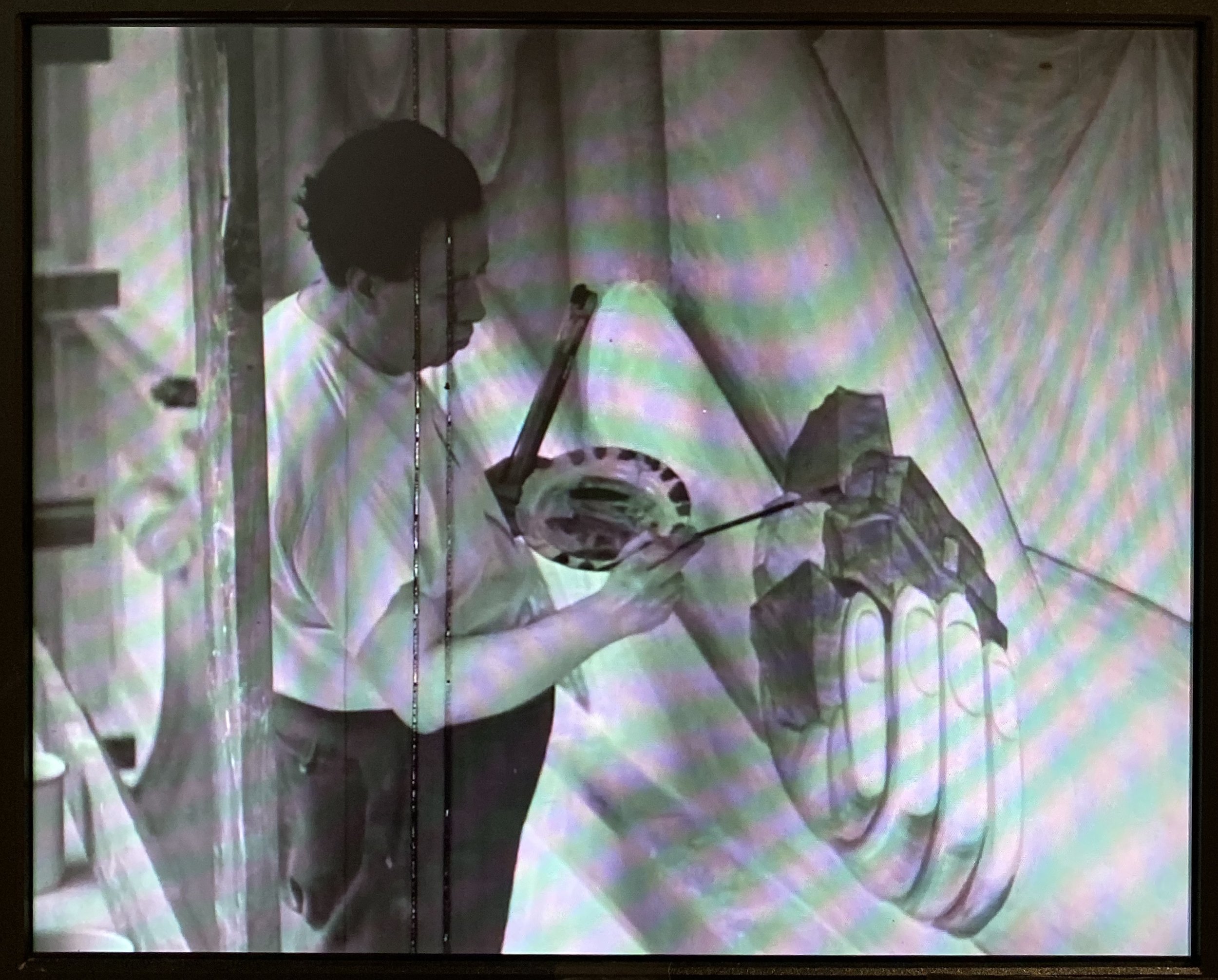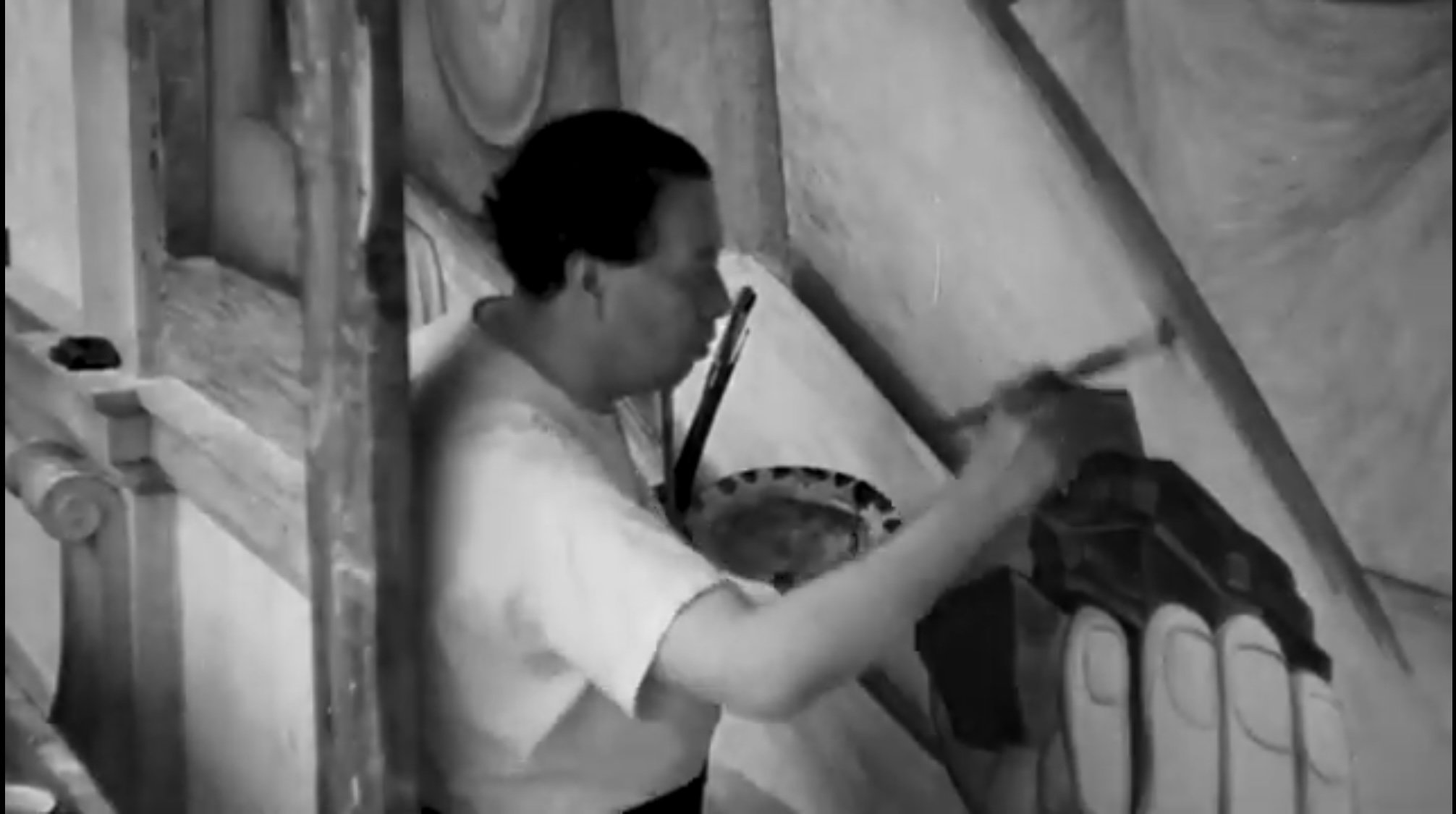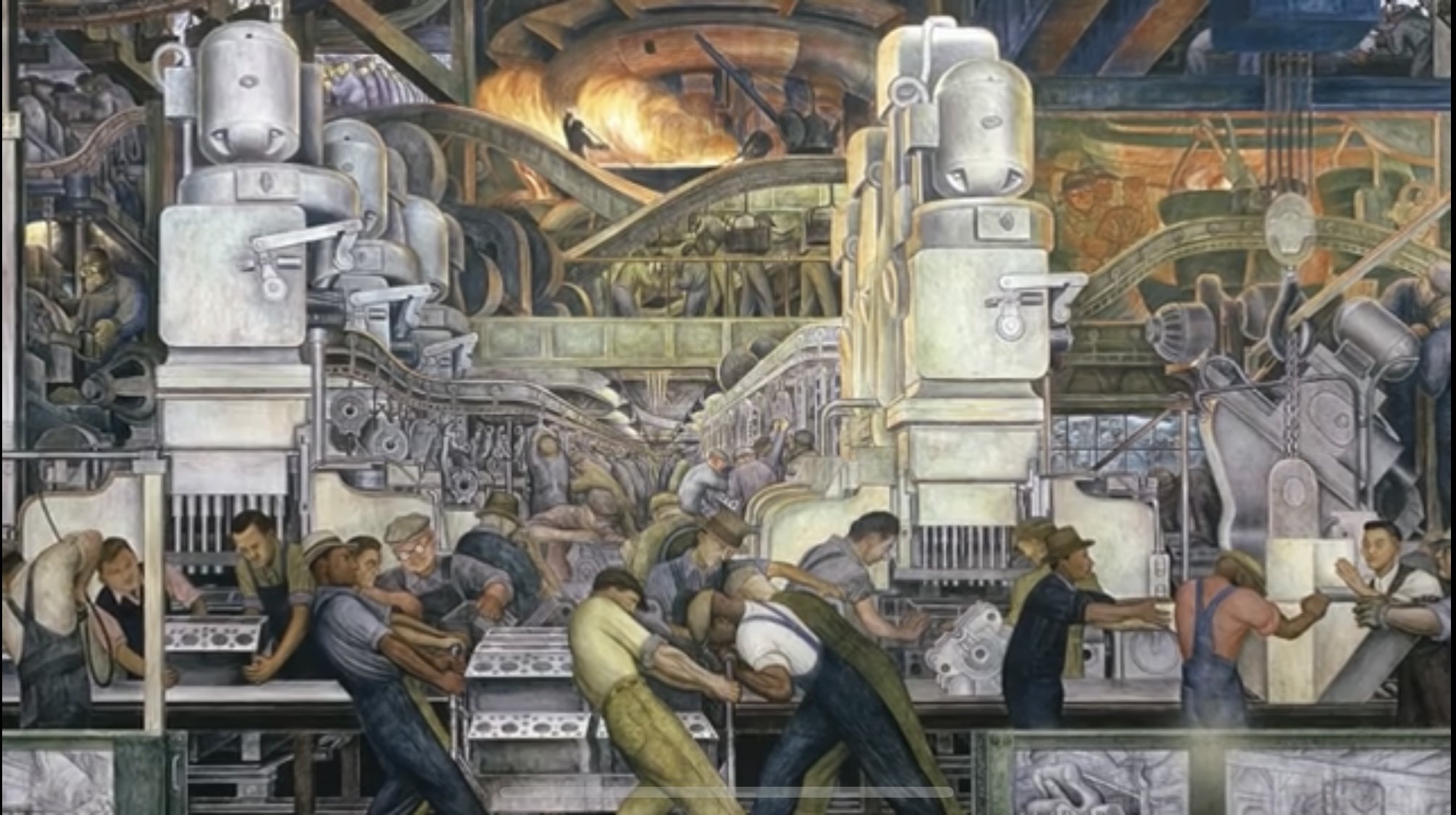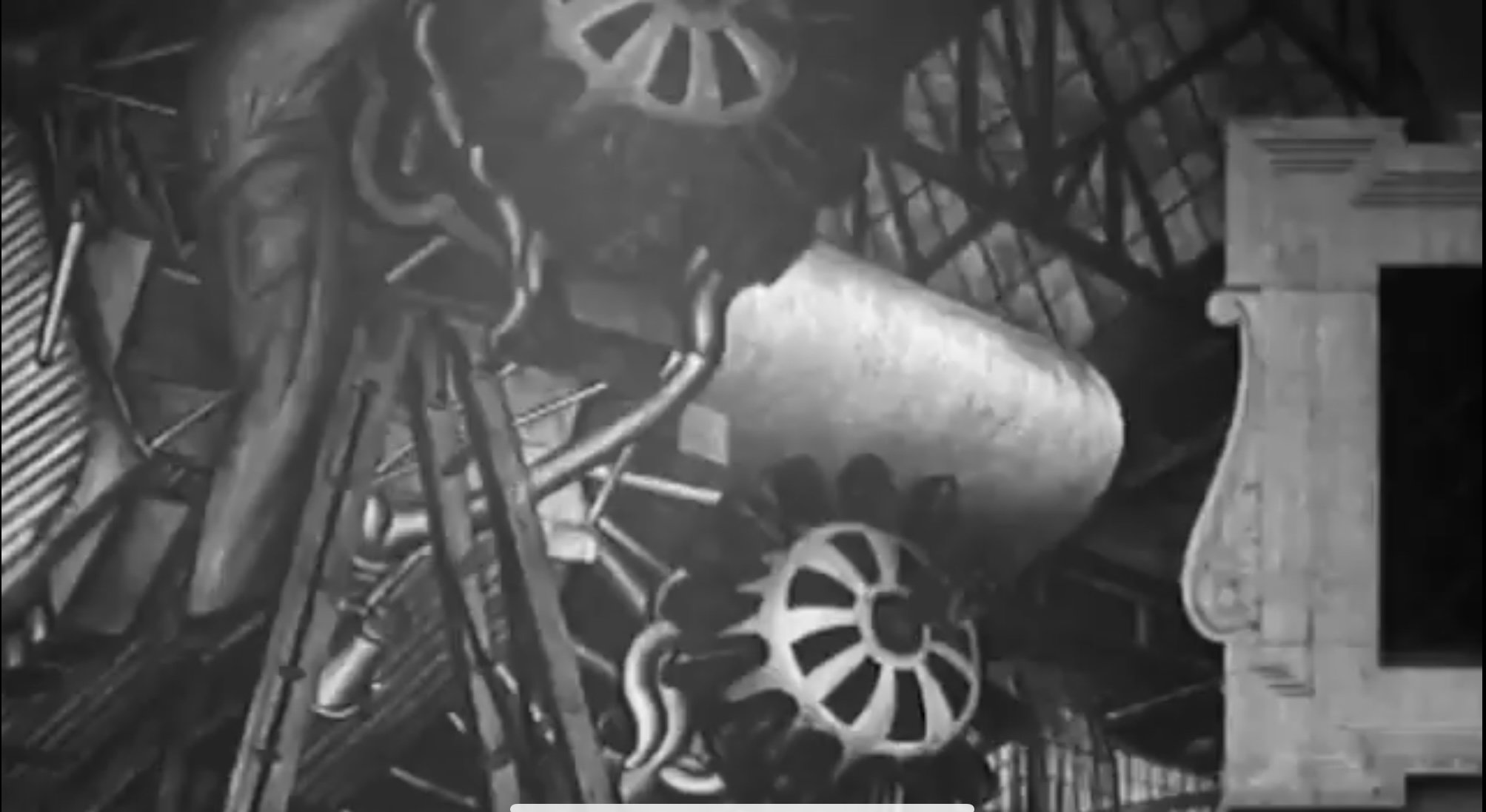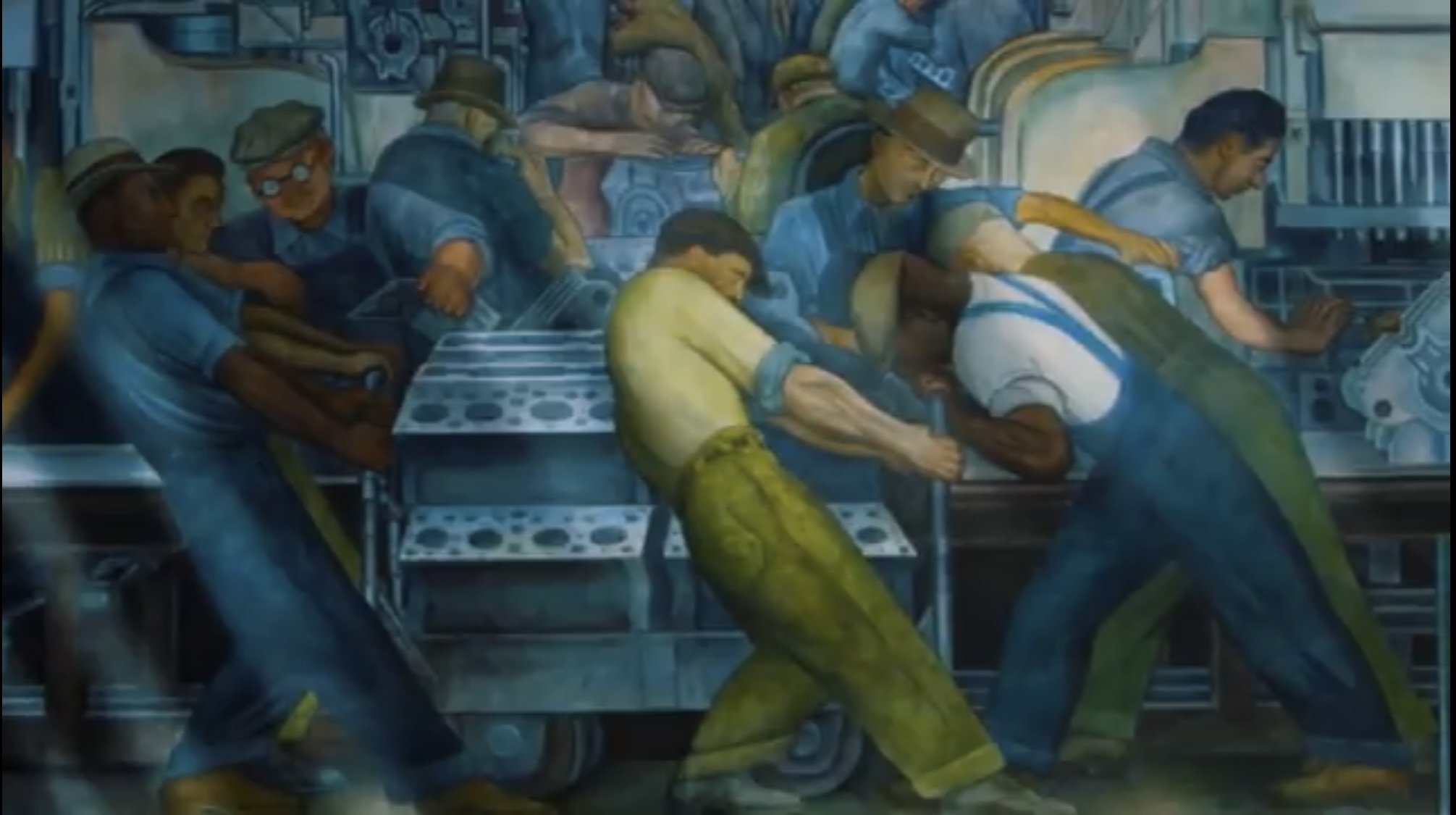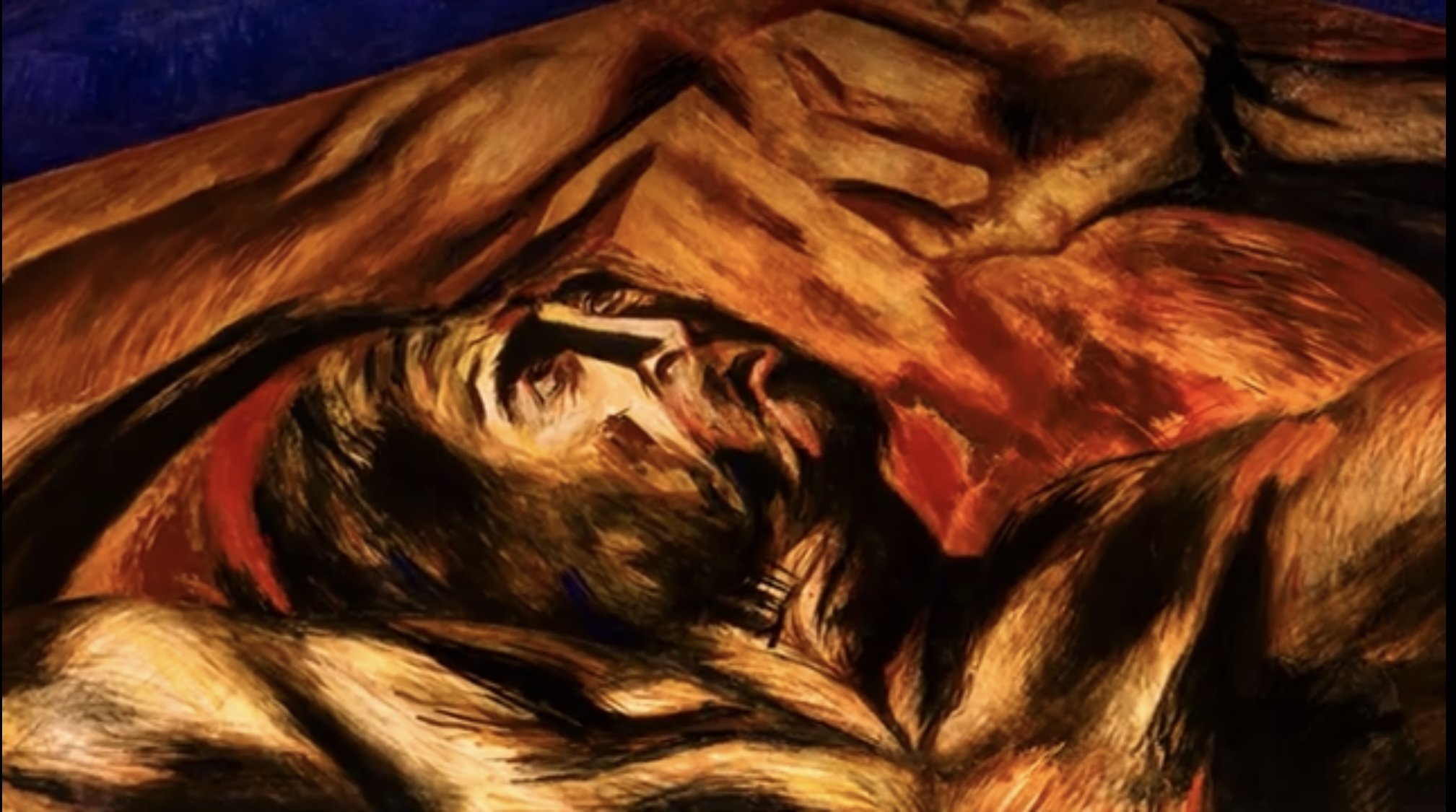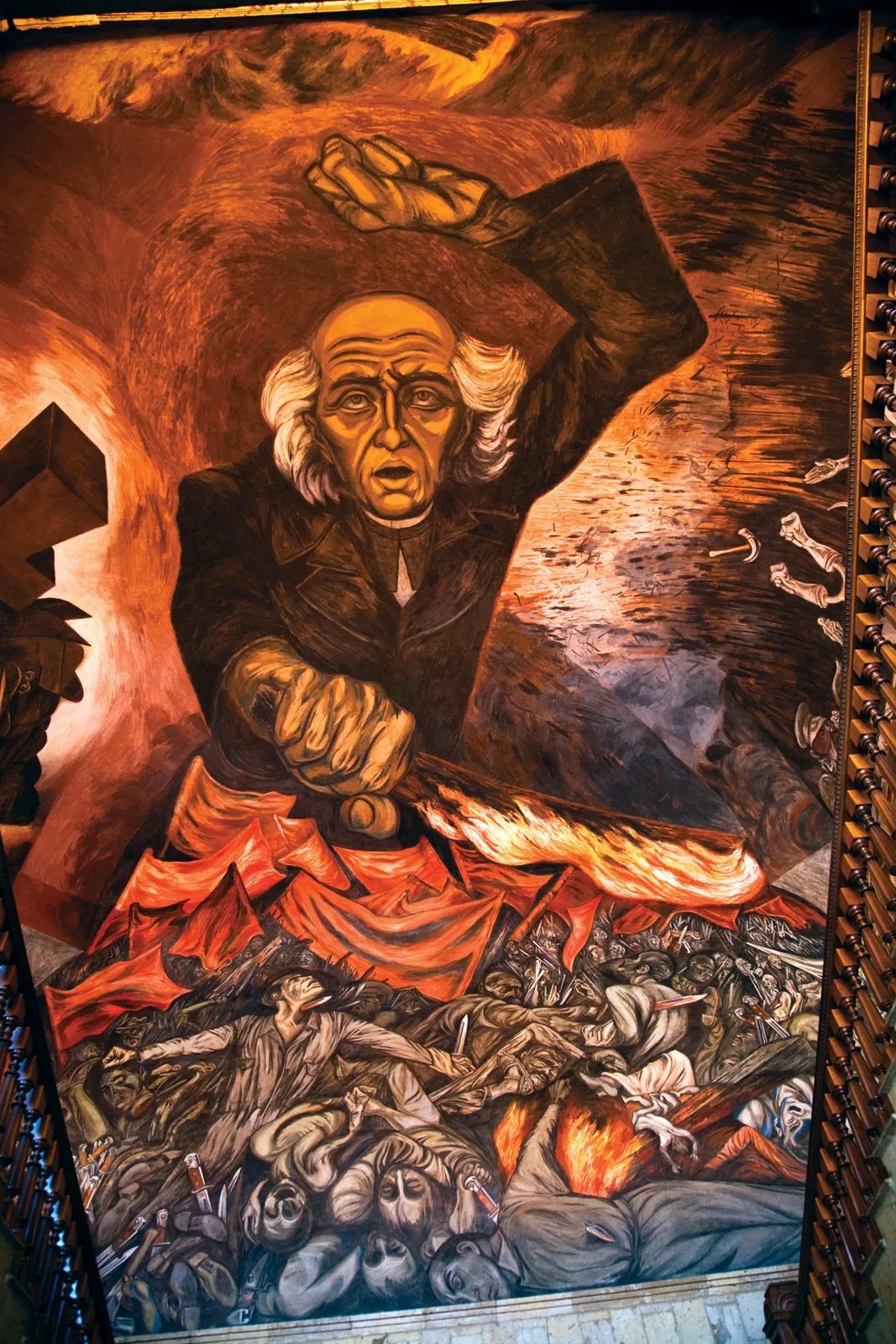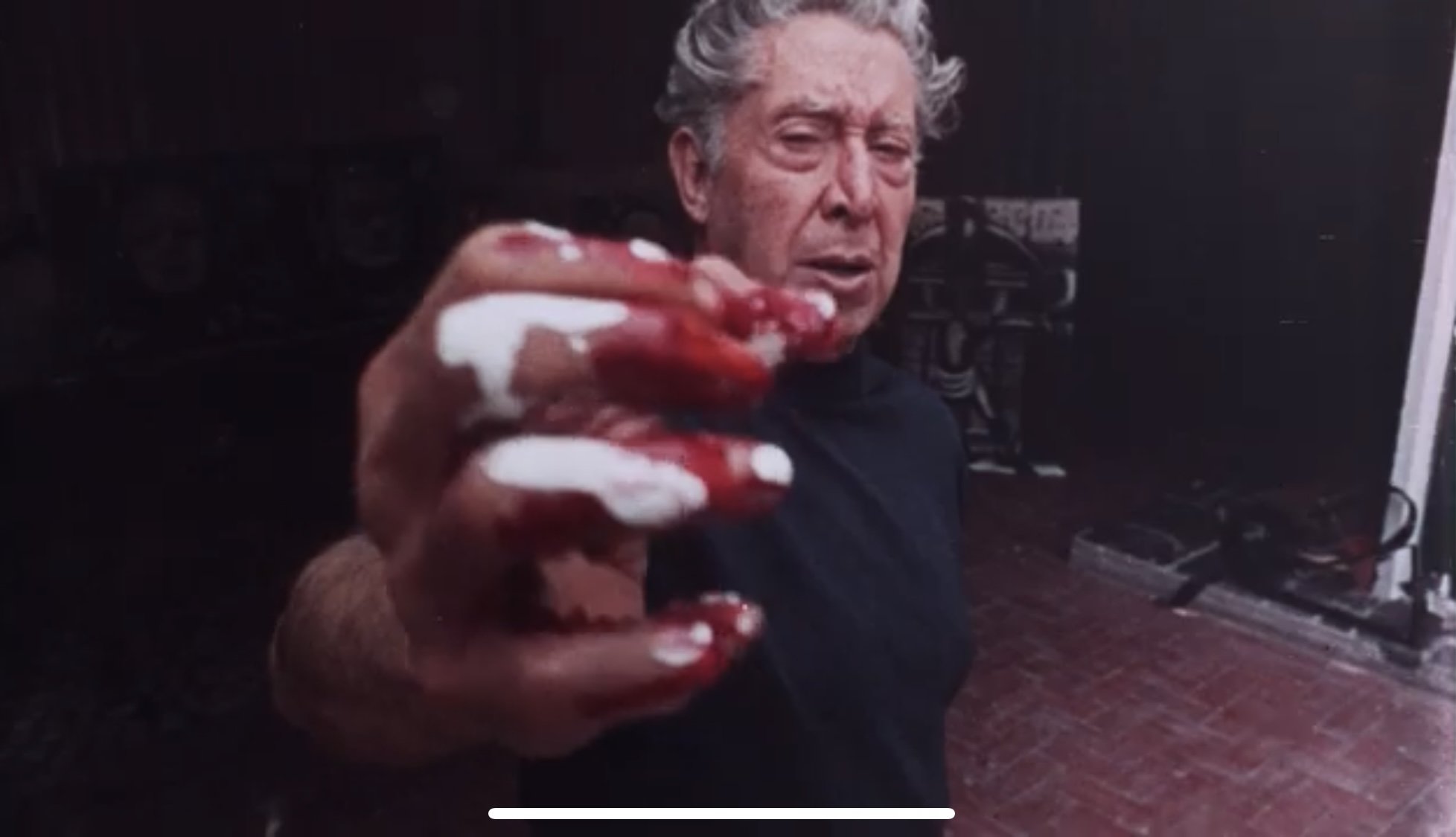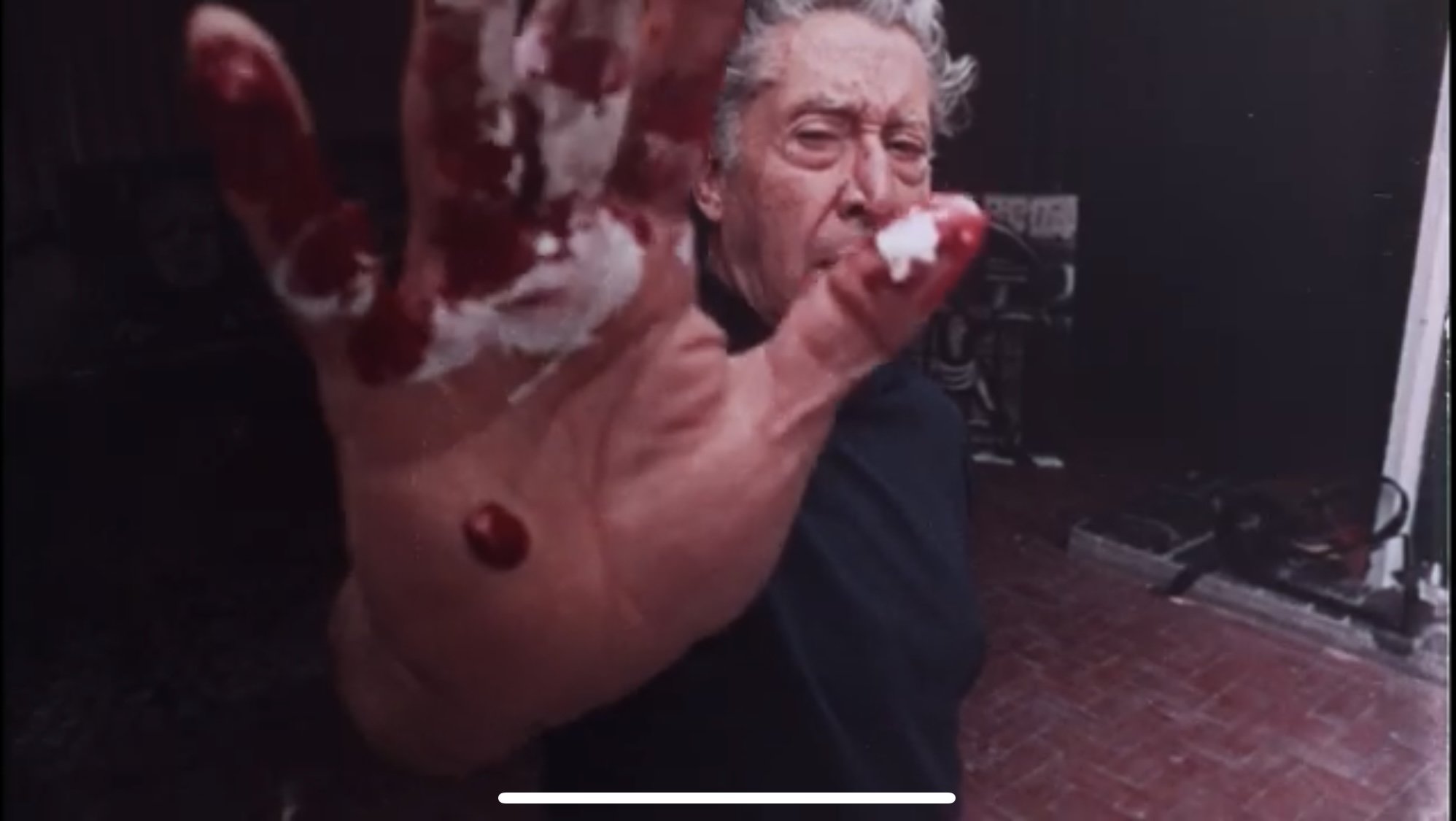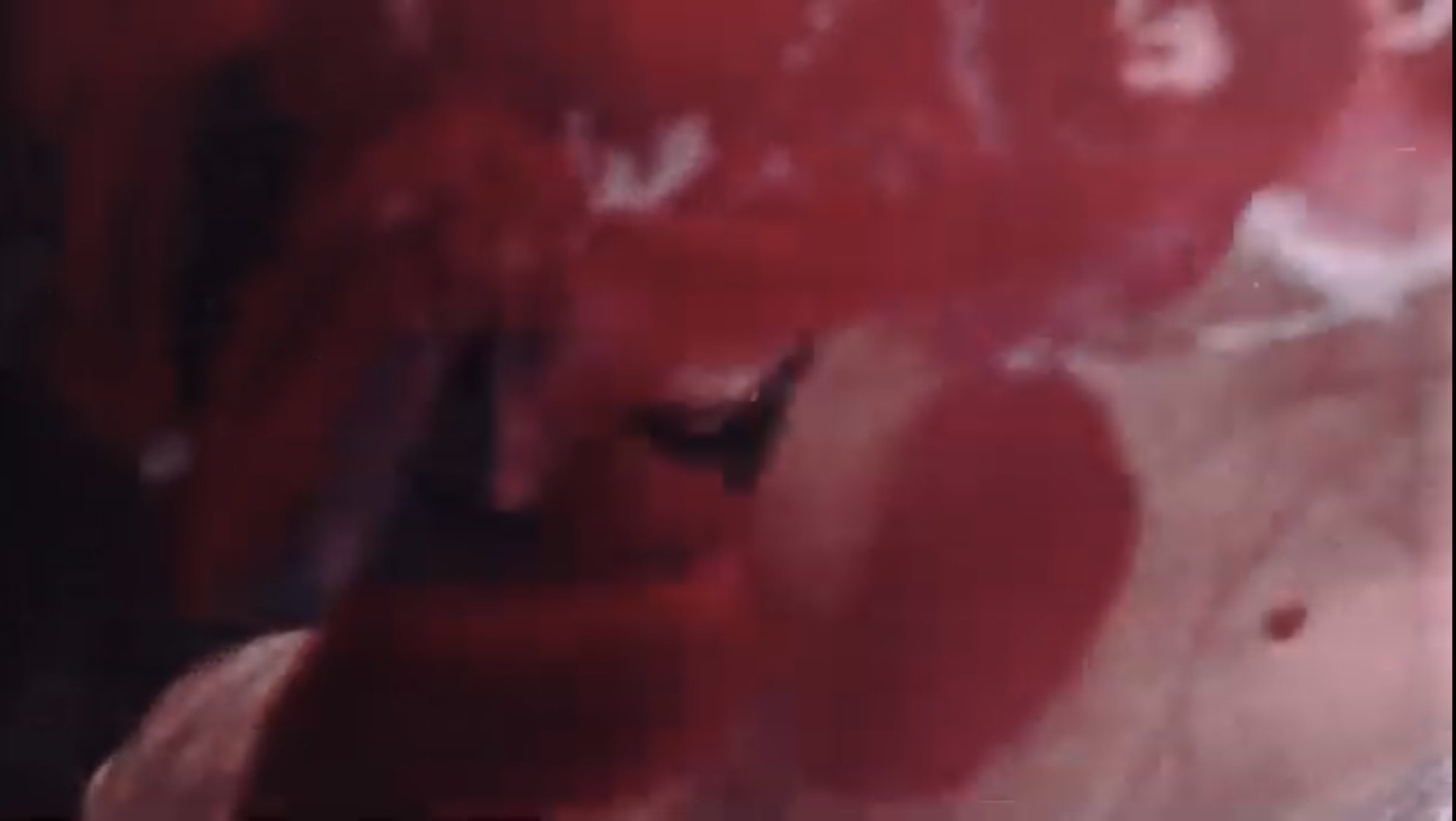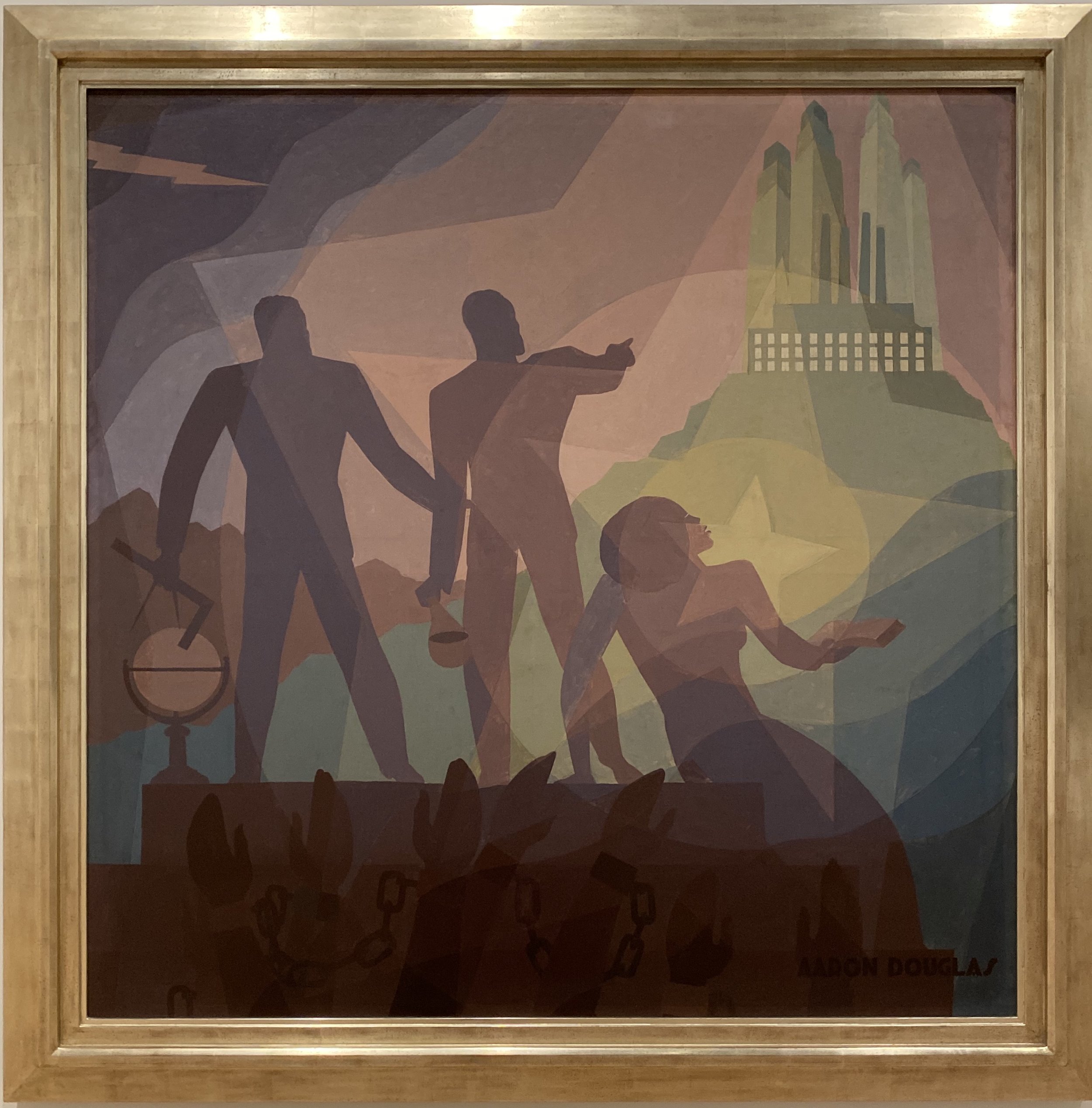+++ LOS TRÉS GRANDES +++
What do Siquieros, Diego Rivera and Jackson Pollock all have in common? Let’s begin….
One single click of the camera could capture the power of realism instantly. This new medium called photography as well as the moving picture would usurp the tedium of replicating Realism in Art. This left Los Trés Grandes free to interpret the world any way they liked.
Diego Rivera
Frieda Kahlo - wife of Diego Rivera
While Diego Rivera was best known for his murals in the 20th Century, while his wife remained relatively unknown. In the 21C his wife Frieda seems to have usurped his notoriety. While giving tours of her blockbuster exhibit at the New York Botanical Garden in 2015, we would jokingly ask: “Diego who?”
José Clemente Orosco
Father Hidalgo (above) is considered the father of the Mexican Revolution
David Alfaro Siqueiros
Siqueiros - The Electric Forest 1939
Siqueiros
While working on a mural on location in NYC David Siqueiros, opened a studio. Soon he was hiring local artists to help, known as his collaborator-assistants. He even taught his apprentices how to drip and pour paint on the floor. One of the artists he employed was Jackson Pollack and as they say - the rest is history.
Jackson Pollock
Pollock - pre-drip interpreting Sequeiros’ Abstract Art
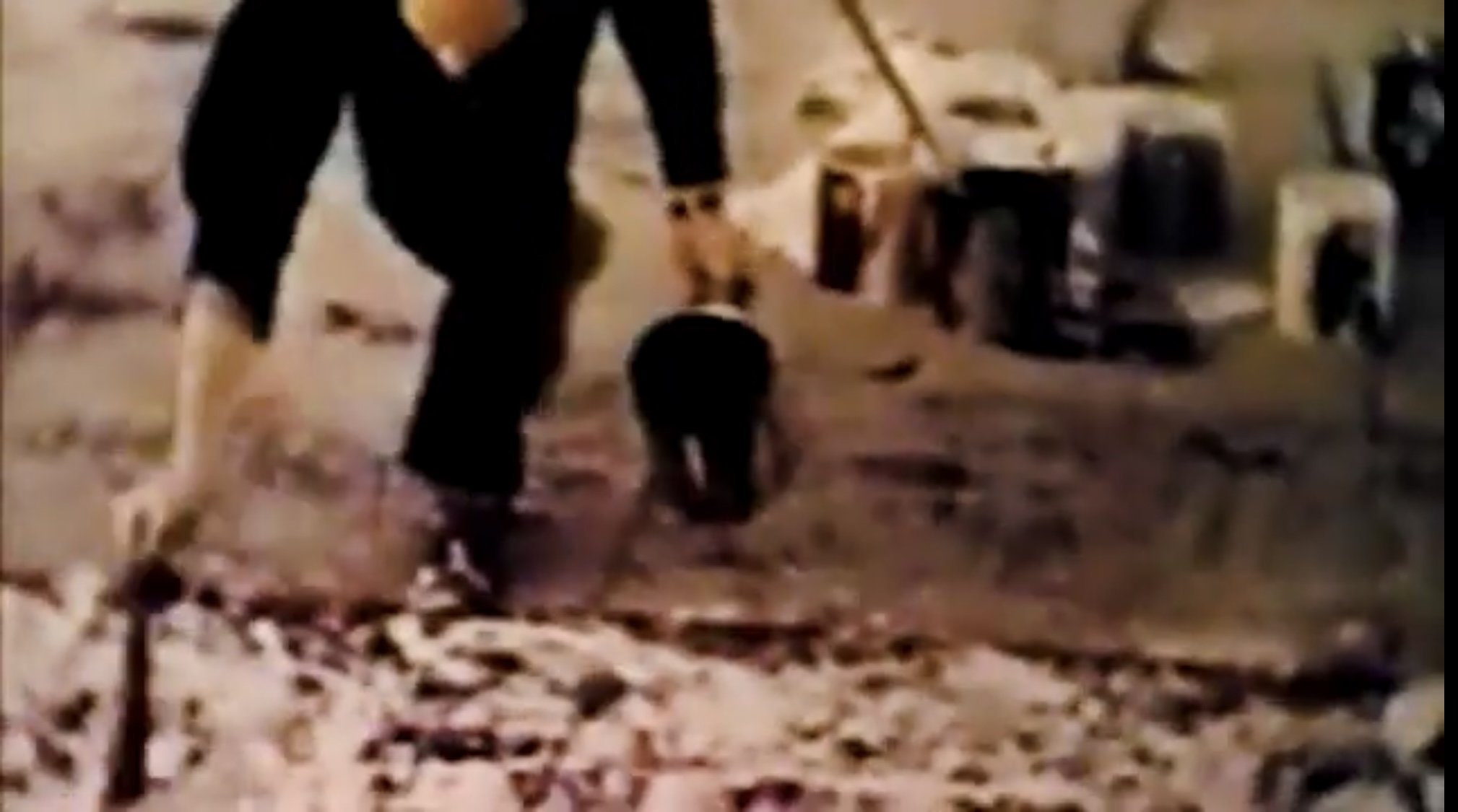
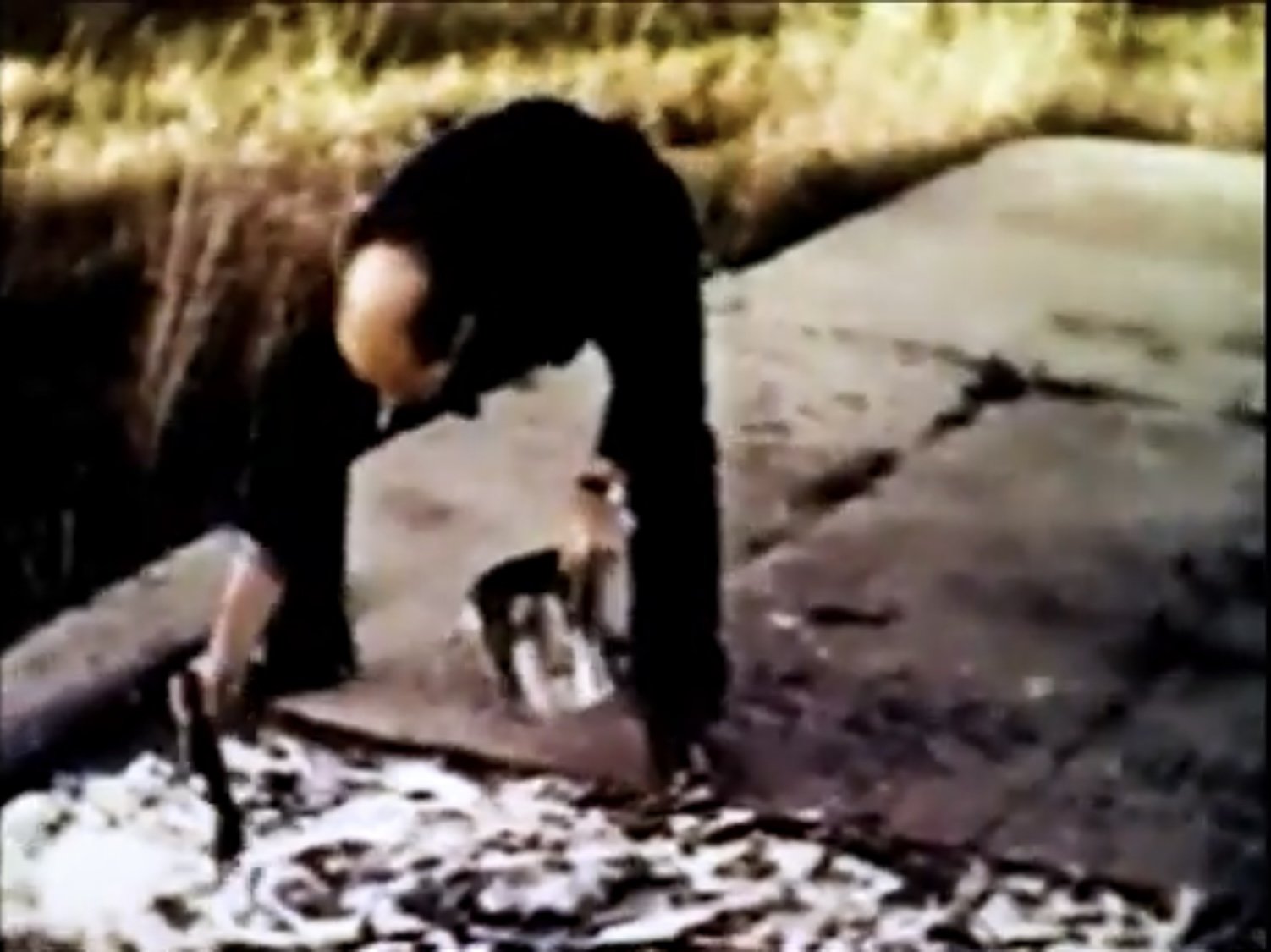
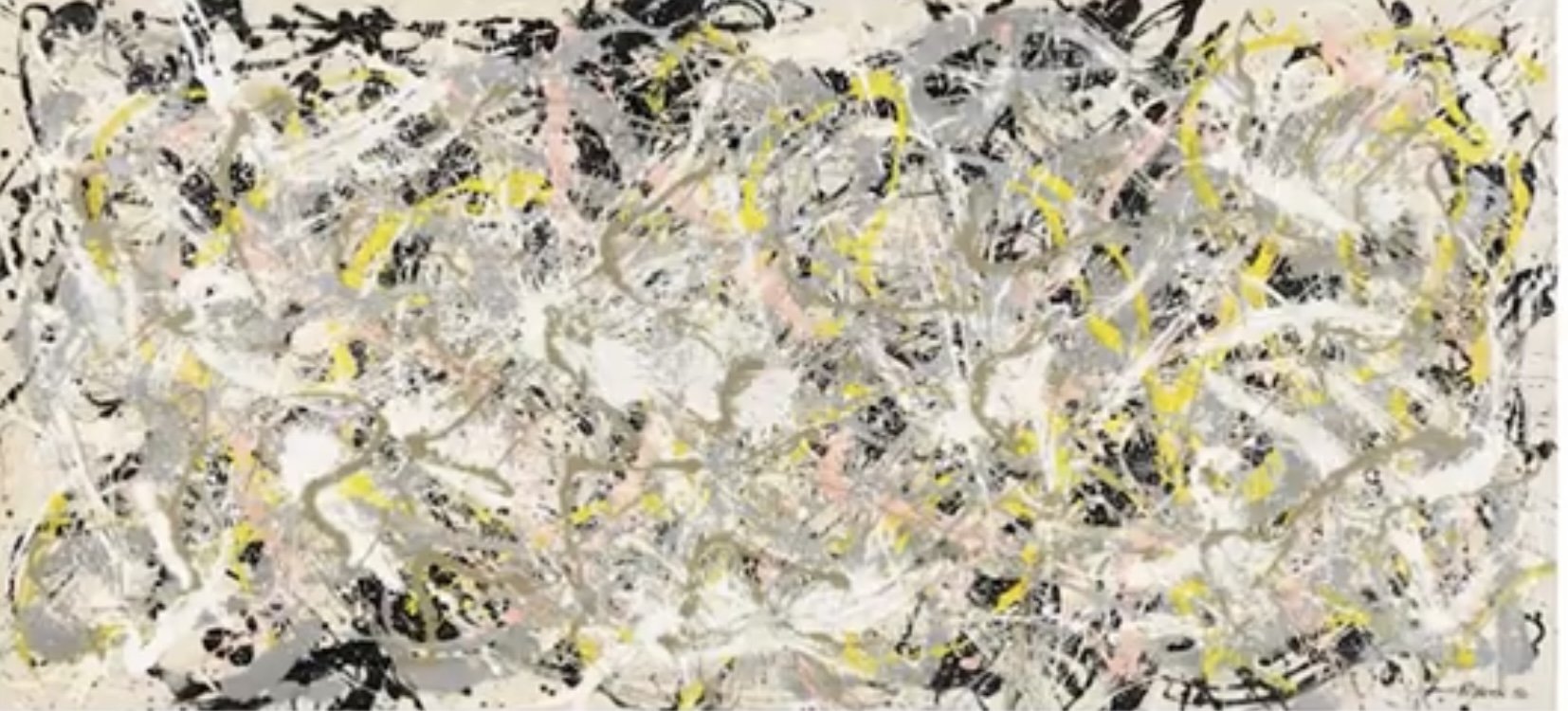
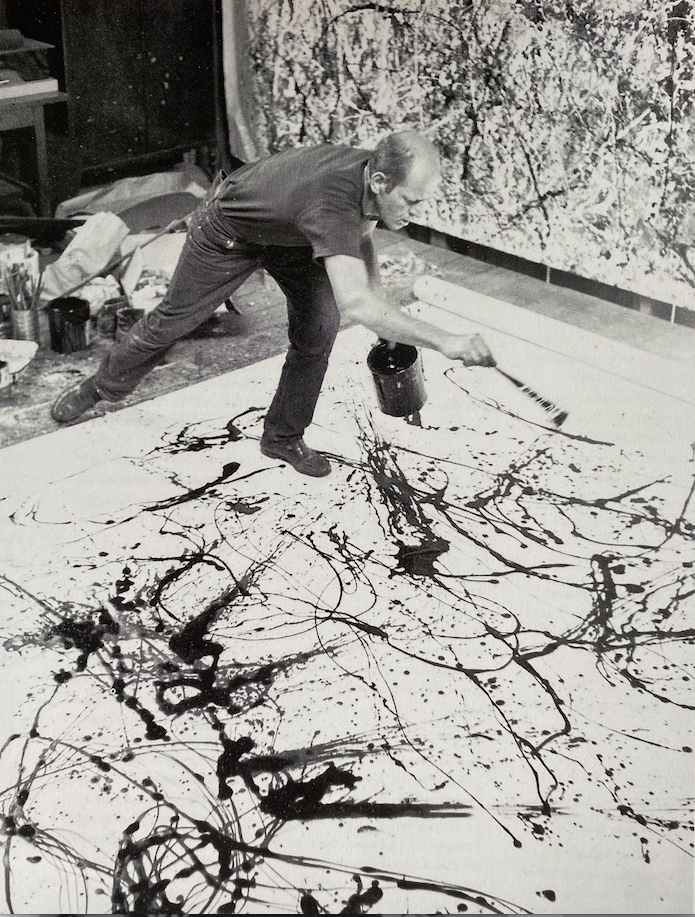
Pollock employing Sequeiros’ technique of drip floor painting
Harold Lehman
As part of a Smithsonian oral history, Harold Lehman points out that his high school buddy, Jackson Pollock never cast his clay sculptures, had a short attention span and was only interested in expressing himself in the moment. Fittingly he became the poster child for Abstract Expressionism – pouring paint on the floor and then walking away.
https://www.aaa.si.edu/collections/interviews/oral-history-interview-harold-lehman-12894#transcript
Mural - Harold Lehman
Even before Siqueiros was commissioned to do murals in New York, he was commissioned to do his first mural in LA. The group of American painters in Los Angeles called the Bloc of Painters chose two themes of the 1930's for representation in their murals: 1) the harsh treatment of the Negro in America and 2) the exploitation of labor by capital.
The evening before the show was to open the Los Angeles "Red Squad" attacked and destroyed every one of their frescos to insure that the images would never reach or be seen by the light of day.
Aaron Douglas
Another exceptional artist who was deeply influenced by these Mexican muralists was Aaron Douglas, a man of African descent. I was so taken with 2 of his paintings at the Vida Americana Exhibit at the Whitney that I shot them – frames and all.
Vida Americana: Mexican Muralists Remake American Art, 1925–1945 Whitney Museum of American Art
https://www.nytimes.com/2020/02/20/arts/design/vida-americana-mexican-muralists-whitney.html
https://whitney.org/exhibitions/vida-americana
“After 'Vida Americana' the history of American art doesn’t remain quite the same.” — The Wall Street Journal
A groundbreaking aspect of this show: Vida American is that the Whitney has finally come into its own. Touting itself as a museum for American exhibits only - as in the Northern Hemisphere, it has finally included those outside the United States, but still AMERICAN, in a way that shows their significant impact and gorgeous contributions to art within our borders.


